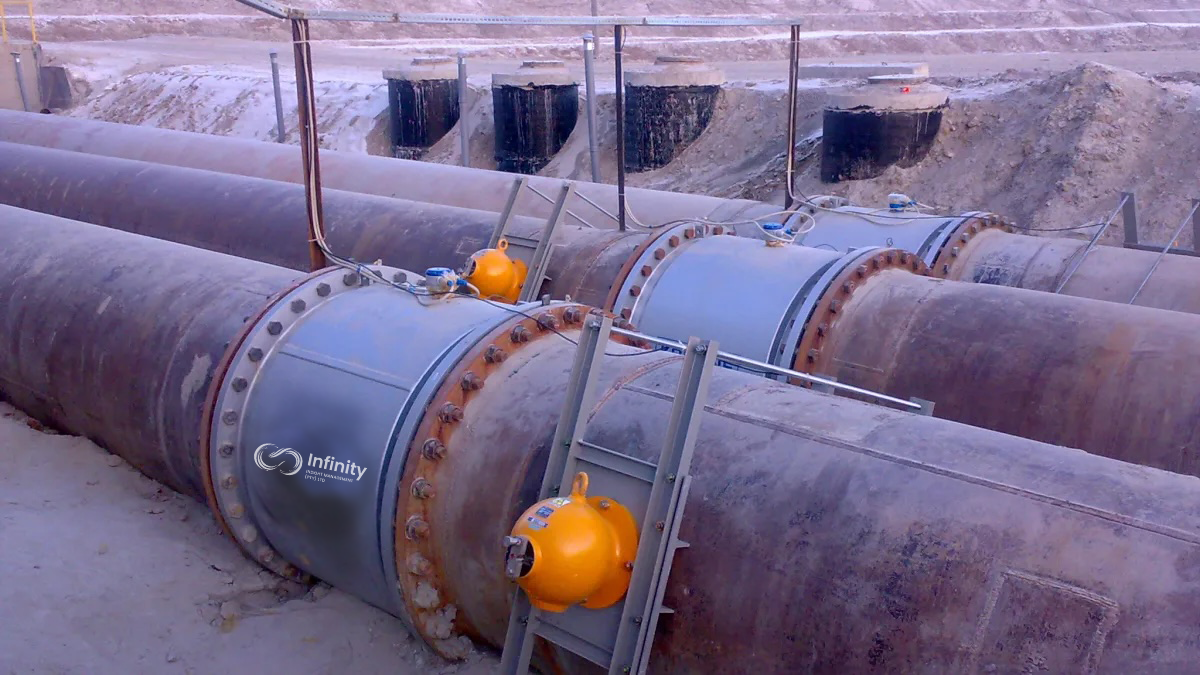Understanding Slurry Electromagnetic Flow Meters
⬅ Back to Posts
Slurry electromagnetic flow meters (magmeters) are vital instruments in industries dealing with challenging fluids, such as slurries. These specialised devices offer accurate and reliable measurement of flow rates for slurry mixtures, which are typically made of liquids and solid particles. In this blog, we’ll delve into the basics of slurry electromagnetic flow meters, their working principles, advantages, and key applications.
What is a Slurry Electromagnetic Flow Meter?
A slurry electromagnetic flow meter is a type of electromagnetic flow meter designed to measure the flow of conductive slurries. Slurries are typically viscous mixtures containing fine solid particles suspended in a liquid, commonly found in industries like mining, wastewater treatment, and chemical processing.
Unlike other flow meters that rely on mechanical or volumetric principles, electromagnetic flow meters operate based on Faraday’s Law of Electromagnetic Induction. This law states that a voltage is generated when a conductor moves through a magnetic field. In the case of slurry mag meters, the conductive fluid acts as the conductor.
How Does a Slurry Electromagnetic Flow Meter Work?
Slurry magmeters work by creating a magnetic field perpendicular to the direction of fluid flow inside a pipe. Here’s a step-by-step breakdown of the working mechanism:
- Magnetic Field Generation: The meter generates a magnetic field across the pipe through coils embedded in the meter body. This field is directed perpendicular to the flow of the slurry.
- Fluid Conductivity: For the meter to function, the slurry must be conductive. This is because the meter measures the voltage generated by the movement of the conductive slurry through the magnetic field. Most slurries meet this requirement, especially those in mining or chemical industries, where minerals or metal particles are often present.
- Electrode Detection: As the slurry flows through the pipe, electrodes placed on the inner walls of the meter detect the voltage generated. This voltage is directly proportional to the velocity of the slurry.
- Flow Calculation: The flow meter’s processor takes this voltage and converts it into a flow rate, providing an accurate measurement of the slurry's flow.
Key Features of Slurry Electromagnetic Flow Meters
- No Moving Parts: One of the primary advantages of slurry magmeters is that they have no moving parts, reducing the risk of wear and tear. This makes them particularly well-suited for abrasive slurries, where mechanical flow meters might suffer from erosion or clogging.
- Non-Invasive Measurement: Since the measurement is conducted using the fluid’s conductivity and the generated voltage, the flow meter does not interfere with the flow itself. This minimizes pressure drop and energy loss in the system.
- Durability: These meters are designed to withstand harsh conditions, including abrasive, corrosive, or high-pressure environments, often making them a preferred choice in industries like mining or wastewater treatment.
- Accuracy and Range: Slurry electromagnetic flow meters are highly accurate, often achieving accuracy levels of ±0.5%. They can handle a wide range of flow rates, making them versatile for both small and large-scale operations.
- Self-Cleaning Capability: Many slurry magmeters are designed with self-cleaning features, where the constant movement of the slurry helps to prevent buildup on the electrodes. This ensures consistent performance and reduces maintenance needs.
Advantages of Using Slurry Electromagnetic Flow Meters
- Handling of Challenging Fluids: The design and working principle of slurry magmeters make them ideal for handling slurries, even when they contain large, abrasive particles or are highly viscous.
- Low Maintenance: With no moving parts and robust construction, these meters require minimal maintenance and have a long service life, even in demanding environments.
- High Accuracy: The ability to provide precise measurements regardless of slurry density or particle size gives industries confidence in process control and fluid management.
- Minimal Pressure Loss: Since the flow meter doesn't obstruct the flow, there’s little to no pressure loss, which is critical for optimizing energy efficiency in fluid transport systems.
Applications of Slurry Electromagnetic Flow Meters
Slurry electromagnetic flow meters are widely used in industries where the measurement of slurries is crucial for process control, efficiency, and safety. Some common applications include:
- Mining and Mineral Processing: In mining, slurries containing crushed ores, minerals, and metals need to be accurately measured during transport and processing.
- Wastewater Treatment: These meters are used to measure the flow of sludge, slurry, or wastewater containing solid waste, ensuring proper treatment and disposal.
- Chemical Processing: Slurry magmeters can handle highly corrosive and abrasive chemicals mixed with solid particles, making them indispensable in chemical manufacturing plants.
- Pulp and Paper Industry: These meters measure the flow of pulp slurries, which are crucial in the production of paper.
- Food and Beverage: In the production of products like sugar or starch, slurries need to be accurately measured for proper processing and quality control.
Conclusion
Slurry electromagnetic flow meters offer a unique and effective solution for industries that handle complex, challenging fluids. Their non-intrusive measurement, low maintenance, and high accuracy make them the go-to choice for many operations. Whether you're dealing with mining slurries or wastewater, these flow meters provide the precision and durability necessary to keep processes running smoothly. By understanding the principles and applications of slurry mag meters, industries can optimise their fluid measurement processes, reduce maintenance costs, and ensure operational efficiency.
